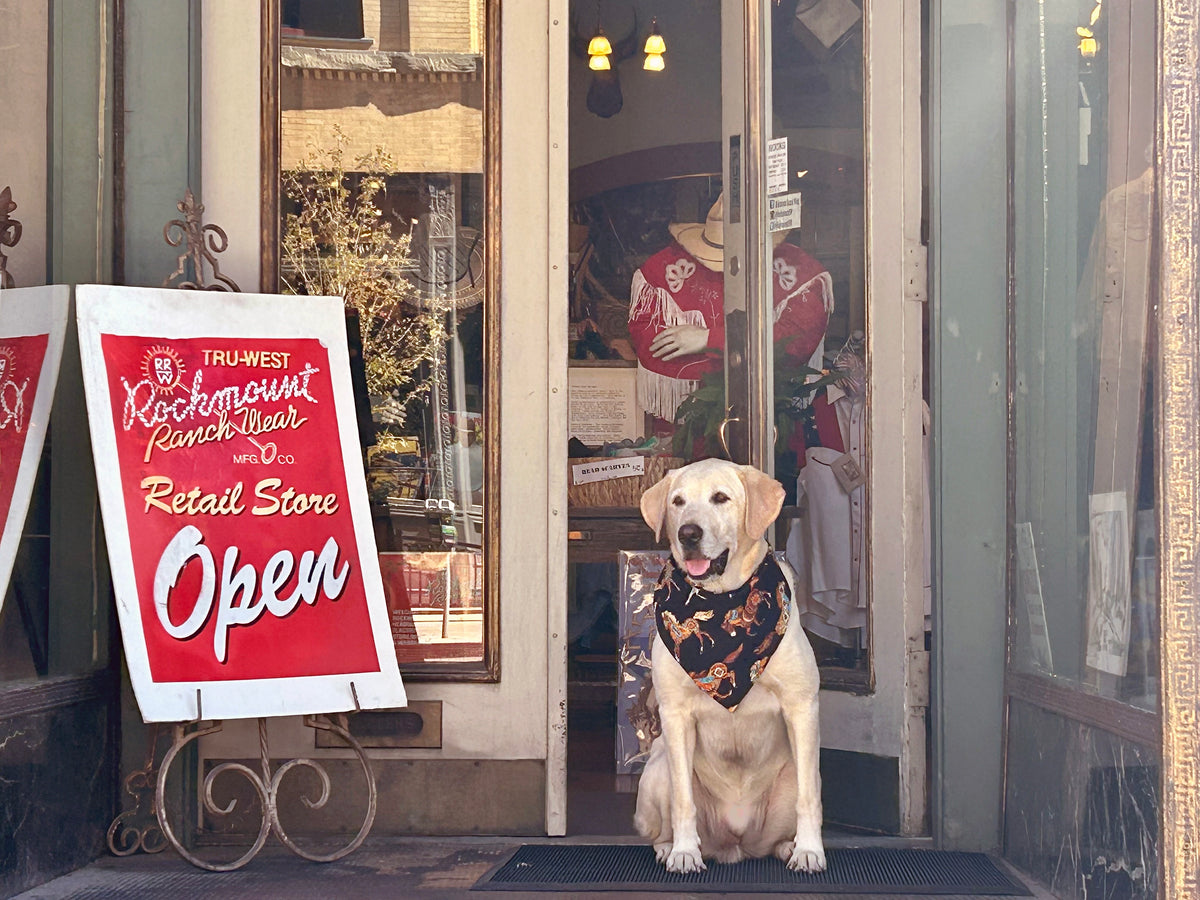The Denver Post - From Practical to Collectible
From practical to collectible
Denverite helps write Western look book
Bronx-born Ralph Lauren was in Denver on business in 1977 and decided to buy himself some Western duds. But to his disappointment, he couldn't find a single authentic Western shirt. Or so he told Vanity Fair in an article published the following year. He had to design his own and in the process reinvented Western wear, he claimed.

Why didn't the trendy designer check the Denver yellow pages? asked Steven E. Weil in a follow-up letter to the magazine. Lauren would have found some 30 Western shirt retailers and manufacturers in Denver, including Rockmount Ranch Wear Manufacturing Co., whose founder, Jack A. Weil, invented the snaps used on almost all Western shirts, including those now made by Lauren.
Steve Weil, who with his grandfather, Jack A., and father, Jack B., runs Rockmount, has been writing about Western shirts since he sent that letter. So little wonder he and G. Daniel DeWeese, an industry magazine editor, have put together "Western Shirts," a gorgeous book an American homegrown fashion.
Denver's origin as a Western shirt center goes back to 1919 when, in a classic Colorado story, Philip Miller, an Easterner with tuberculosis, came to Denver to die, but instead got well and set up a branch of the family hat business. He quickly expanded into other apparel, including Western clothing. The company became Miller Stockman. Over the years, employees left to start other companies, including Rockmount.
Western wear is a close-knit industry made up of family-owned firms, and much of the business is done on a handshake, but that is not to say there hasn't been a bit of piracy over the years. Jack A. Weil recalls a visit from a competitor who spotted a sample Rockmount shirt made of mattress ticking. Rockmount decided against producing the shirt because the fabric flaked. Later the competitor phoned Weil to say, "You SOB, why didn't you tell me that shirt was no good?" The man had copied the mattress-ticking fabric, "and every one came back."

Western shirts are one of America's few unique clothing styles. (Levi's are another.) Slim-fitting with long, narrow cuffs, they were designed so cowboys wouldn't catch their shirts while working cattle or doing other chores. Jack A., who started Rockmount in 1946, replaced buttons with snaps so that shirt fronts and sleeves would snap open, not tear, if the shirt got caught in barbed wire or animal horns. He recognized that cowboys liked to dude it up, so he added embroidery and fringe, fancy yokes and bright fabrics.
Until the late 1970s, the shirts were sold mostly to ranch and farm hands and a few people who liked casual Western wear. Then came the Urban Cowboy craze, and everybody bought Western shirts. Manufacturers geared up, only to find themselves with unsold inventory when the trend ran its course. Several went bankrupt, but not Rockmount, which had been conservative about expanding. Those who survived faced other problems, including NAFTA, and more went bust in the 1990s. But thanks in part to Lauren, who promoted high-priced Western designs, and to the nostalgia craze, Western shirts remain popular.
So do the old ones, and that's the real reason for this book. Steve Weil is a collector, and "Western Shirts: A Classic American Fashion" is not just a history of the Western shirt in America, it's the bible for collectors.
Here are the stories of the manufacturers, a glossary of Western shirt terms - shotgun cuff, smile pocket, scalloped yoke - pictures of labels, catalogs, ads and counter cards. And there are wonderful full-color photos of the shirts themselves in all their splendor. In short, everything is here for the shirt collector, including interviews with collectors themselves.
Not everybody understands the collector craze, including a few of the manufacturers. Browsing through a Los Angeles antiques store some years ago, Steve came across a brown gabardine Rockmount shirt with fancy yellow embroidery and told the dealer it was one of the first Western shirts his grandfather had made.
Touched, the dealer told Steve to take the shirt and send him a couple of new ones. Steve was so excited at the find that he didn't wait until he got home but found a phone booth and called his grandfather. "What?" Jack A. exclaimed. "You traded two perfectly good new shirts for an old one we sold for three dollars 40 years ago?"
Sandra Dallas is a Denver author. Her newest novel, "New Mercies," is scheduled for release next month.
...

